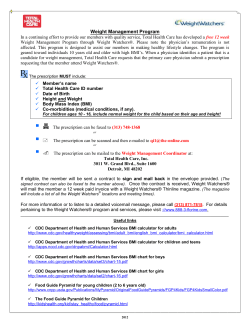
Special Considerations for Prophylaxis for Postpartum Women Technical Appendix
Article DOI: http://dx.doi.org/10.3201/eid2002.130611 Special Considerations for Prophylaxis for and Treatment of Anthrax in Pregnant and Postpartum Women Technical Appendix Technical Appendix Table 1. Oral Antimicrobial Post-Exposure Prophylaxis for infection with Bacillus anthracis* a. For all strains, regardless of penicillin susceptibility or if susceptibility is unknown Non-pregnant Adults: Modifications for Pregnant Women: ciprofloxacin 500 mg every 12H ciprofloxacin is preferred OR no change in dosing doxycycline 100 mg every 12H OR levofloxacin 750 mg every 24H OR moxifloxacin 400 mg every 24H OR clindamycin† 600 mg every 8H OR b. Alternatives for penicillin-susceptible strains amoxicillin 1 g every 8H OR penicillin VK 500 mg every 6H Duration of Post-Exposure Prophylaxis for Bacillus anthracis: 60 d no change in duration *Boldface indicates preferred agent. Alternative selections are listed in order of preference for treatment for patients who cannot take first-line treatment, or if first-line treatment is unavailable. †Based on in vitro susceptibility data, rather than studies of clinical efficacy. Page 1 of 7 Publisher: CDC; Journal: Emerging Infectious Diseases Article Type: Online Report; Volume: 20; Issue: 2; Year: 2014; Article ID: 13-0611 DOI: 10.3201/eid2002.130611; TOC Head: Online Report Technical Appendix Table 2. Intravenous Antimicrobial Treatment for Systemic Anthrax with Possible/Confirmed Meningitis* Nonpregnant Adults: Modifications for pregnant Women: 1. A Bactericidal Agent (Fluoroquinolone) ciprofloxacin 400 mg every 8H ciprofloxacin is preferred OR levofloxacin 750 mg every 24H OR moxifloxacin 400 mg every 24H PLUS 2. A Bactericidal Agent (β-lactam) a. For all strains, regardless of penicillin susceptibility or if susceptibility is unknown meropenem 2 g every 8H OR imipenem† 1 g every 6H OR doripenem 500 mg every 8H OR b. Alternatives for penicillin-susceptible strains penicillin G 4 million units every 4H OR ampicillin 3 g every 6H PLUS 3. A Protein Synthesis Inhibitor linezolid‡ 600 mg every 12H at least one antibiotic with transplacental passage is recommended; ciprofloxacin, levofloxacin, meropenem, ampicillin, penicillin, clindamycin, rifampin OR clindamycin 900 mg every 8H OR rifampin§ 600 mg every 12H OR chloramphenicol¶ 1 g every 6–8 H Duration of treatment: for ≥2–3 weeks until clinical criteria for stability are met. Patients exposed to aerosolized spores will require prophylaxis to complete an antimicrobial drug course of 60 d from onset of illness (see Technical Appendix Table 1). No change in duration *Systemic anthrax includes anthrax meningitis; inhalation, injection, gastrointestinal anthrax; and cutaneous anthrax with systemic involvement, extensive edema, or lesions of the head or neck. Boldface indicates preferred agent. Alternative selections are listed in order of preference for treatment for patients who cannot take first-line treatment, or if first-line treatment is unavailable. † Increased risk of seizures associated with imipenem/cilastatin treatment ‡Linezolid should be used with caution in patients with thrombocytopenia, as it may exacerbate it. Linezolid use for >14 d carries additional risk for hematopoietic toxicity. §Rifampin is not a protein synthesis inhibitor; however, it may be used in combination with other antimicrobials based on its in vitro synergy. ¶Should only be used if other options are not available, due to toxicity concerns. Page 2 of 7 Publisher: CDC; Journal: Emerging Infectious Diseases Article Type: Online Report; Volume: 20; Issue: 2; Year: 2014; Article ID: 13-0611 DOI: 10.3201/eid2002.130611; TOC Head: Online Report Technical Appendix Table 3. Intravenous Antimicrobial Treatment for Systemic Anthrax When Meningitis Has Been Excluded* Non-pregnant adults Modifications for pregnant Women: 1. A Bactericidal Antimicrobial a. For all strains, regardless of penicillin susceptibility or if susceptibility is unknown ciprofloxacin 400 mg every 8H ciprofloxacin is preferred OR levofloxacin 750 mg every 24H OR moxifloxacin 400 mg every 24H OR meropenem 2 g every 8H OR imipenem† 1 g every 6H OR doripenem 500 mg every 8H OR vancomycin 60 mg/kg/day IV divided every 8 h (maintain serum trough concentrations of 15 – 20 µg/mL) OR b. Alternatives for penicillin-susceptible strains penicillin G 4 million units every 4H OR ampicillin 3 g every 6H PLUS 2. A Protein Synthesis Inhibitor clindamycin 900 mg every 8H at least one antibiotic with transplacental passage is recommended; ciprofloxacin, levofloxacin, meropenem, ampicillin, penicillin, clindamycin, rifampin OR linezolid‡ 600 mg every 12H OR doxycycline§ 200 mg initially, then 100 mg every 12H OR rifampin¶ 600 mg every 12H Duration of treatment: for ≥2 weeks until clinical criteria for stability are met. Patients exposed to aerosolized spores will require prophylaxis to complete an antimicrobial drug course of 60 d from onset of illness (see Technical Appendix Table 1). No change in duration *Systemic anthrax includes anthrax meningitis; inhalation, injection, gastrointestinal anthrax; and cutaneous anthrax with systemic involvement, extensive edema, or lesions of the head or neck. Boldface indicates preferred agent. Alternative selections are listed in order of preference for treatment for patients who cannot take first-line treatment, or if first-line treatment is unavailable. †Increased risk of seizures associated with imipenem/cilastatin treatment ‡Linezolid should be used with caution in patients with thrombocytopenia, as it may exacerbate it. Linezolid use for >14 d carries additional risk for hematopoietic toxicity. §A single 10–14 course of doxycycline is not routinely associated with tooth-staining. ¶Rifampin is not a protein synthesis inhibitor; however, it may be used in combination with other antimicrobials based on its in vitro synergy. Page 3 of 7 Publisher: CDC; Journal: Emerging Infectious Diseases Article Type: Online Report; Volume: 20; Issue: 2; Year: 2014; Article ID: 13-0611 DOI: 10.3201/eid2002.130611; TOC Head: Online Report Technical Appendix Table 4. Oral Antimicrobial Treatment for Cutaneous Anthrax without Systemic Involvement* Non-pregnant adults Modifications for pregnant women a. For all strains, regardless of penicillin susceptibility or if susceptibility is unknown ciprofloxacin 500 mg every 12H ciprofloxacin is preferred OR doxycycline 100 mg every 12H OR levofloxacin 750 mg every 24H OR moxifloxacin 400 mg every 24H OR clindamycin† 600 mg every 8H OR b. Alternatives for penicillin-susceptible strains amoxicillin 1 g every 8H OR penicillin VK 500 mg every 6H Duration of Treatment: 60 d No change on duration *Recommendations are specific to cutaneous anthrax in the setting of bioterrorism. Boldface indicates preferred agent. Alternative selections are listed in order of preference for treatment for patients who cannot take first-line treatment, or if first-line treatment is unavailable.. †Based on in vitro susceptibility data, rather than studies of clinical efficacy. Page 4 of 7 Publisher: CDC; Journal: Emerging Infectious Diseases Article Type: Online Report; Volume: 20; Issue: 2; Year: 2014; Article ID: 13-0611 DOI: 10.3201/eid2002.130611; TOC Head: Online Report Members of the Workgroup on Anthrax in Pregnant and Postpartum Women: Mahmoud Ahmed University of Texas Medical Branch Martina Louise Badell Emory University Kristin Banks Centers for Disease Control and Prevention (CDC) Wanda Barfield CDC Michael Bartenfeld CDC Rich Beigi* Magee-Women’s Hospital Tina Bhavsar* CDC William Bower* CDC John Bradley* American Academy of Pediatrics Deborah Brower Health Resources and Services Administration Renee Brown-Bryant* CDC William Callaghan* CDC Tegan Callahan Association of Maternal & Child Health Programs Amanda Cohn* CDC Ava Marie S. Conlin* Naval Health Research Center Andreea Creanga* CDC Deborah Dee* CDC Gary Disbrow Biomedical Advanced Research and Development Authority Jeffrey Ecker* Massachusetts General Hospital Jesse Geibe CDC Alma Gomez Association of Maternal & Child Health Programs Susan Gorman CDC Jacqueline Grant* State of Georgia Violanda Grigorescu CDC Gary Hankins* University of Texas Medical Branch Page 5 of 7 Publisher: CDC; Journal: Emerging Infectious Diseases Article Type: Online Report; Volume: 20; Issue: 2; Year: 2014; Article ID: 13-0611 DOI: 10.3201/eid2002.130611; TOC Head: Online Report Piia Hanson Association of Maternal & Child Health Programs Karen E, Hays* American College of Nurse-Midwives Mary F. Hebert University of Washington Robert Heine* Duke University Katherine Hendricks* CDC Jack Herrmann National Association of County and City Health Officials Kate Howe* Association of Maternal & Child Health Programs Mark L. Hudak* University of Florida College of Medicine -Jacksonville Denise Jamieson* CDC Ayten Kadanali, Umraniyae EAH, Turkey Sedat Kadanali, Medical Park Hospital Turkey Juliette Kendrick* CDC Hye-Joo Kim* CDC George Korch Office of the Assistant Secretary for Preparedness and Response Marian McDonald CDC Michael M. McNeil* CDC Dana Meaney-Delman* CDC Nancy Messonnier* CDC Lara Misegades* CDC Mirjana Nesin* National Institutes of Health Stacey Parker CDC Alison Patti, CDC Andrew Pavia* University of Utah Georgina Peacock* CDC Roberta Prepas* American College of Nurse Midwives Conrad P. Quinn* CDC Lauren Raskin Ramos Association of Maternal & Child Health Programs Sonja Rasmussen* CDC Page 6 of 7 Publisher: CDC; Journal: Emerging Infectious Diseases Article Type: Online Report; Volume: 20; Issue: 2; Year: 2014; Article ID: 13-0611 DOI: 10.3201/eid2002.130611; TOC Head: Online Report Mirelys Rodriguez CDC Paula Rosenberg CDC Catherine Ruhl* Association of Woman’s Health, Obstetric and Neonatal Nurses Mark Sewell U.S. Army Sean Shadomy* CDC Jeanne S. Sheffield* University of Texas Southwestern Medical Center Tom Shimabukuro* CDC David Siegel National Institutes of Health Laura Smith CDC David Soper* Medical University of South Carolina Helen Stallings Office of the Assistant Secretary for Preparedness and Response Tracee Treadwell CDC Methodius Tuuli* Washington University in St. Louis Etobssie Wako* CDC Lee Warner CDC D. Heather Watts* National Institutes of Health George Wendel Jr.* American Board of Obstetrics and Gynecology Linda West* CDC Amy William CDC Melissa Willis Biomedical Advanced Research and Development Authority Mary Wright* National Institutes of Health Yon Yu* CDC Laurie Zephyrin Department of Veterans Affairs Marianne Zotti* CDC *Designates pre-meeting work group participant. Page 7 of 7
© Copyright 2025




















